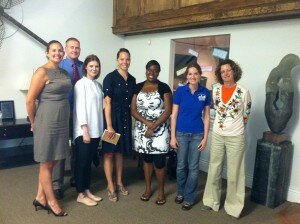Today’s post originally appeared on the Points of Light daily blog site on August 23, 2012.
Seattle is actively creating and cultivating spaces for community connections.
 Two of my Seattle meetings took place on strolls through the Seattle Art Museum’s Olympic Sculpture Park, which used to be a petroleum transfer and distribution facility. Today, thanks to philanthropic and volunteer leadership, the site has been transformed.
Two of my Seattle meetings took place on strolls through the Seattle Art Museum’s Olympic Sculpture Park, which used to be a petroleum transfer and distribution facility. Today, thanks to philanthropic and volunteer leadership, the site has been transformed.
With unobstructed views of Puget Sound and the Olympic Mountains, the garden circles a bold, red Calder sculpture, “The Eagle.” The park is dotted with chairs to facilitate conversations in any and all groupings.
My Seattle hosts said the Sculpture Garden has become a gathering point, offering free yoga 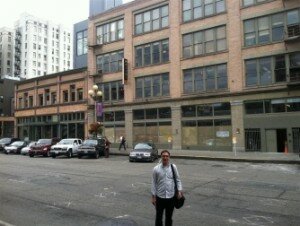 on the grass, food trucks and farmers’ markets, art classes, performances and family festivals like the Salmon Return Celebration.
on the grass, food trucks and farmers’ markets, art classes, performances and family festivals like the Salmon Return Celebration.
The theme of creating community connections was a thread throughout my visit. Seattle is, of course, home to Starbucks, the leader in creating “third spaces” – gathering points between work and home. In my meetings with the Starbucks team – Cliff Burrows, Rodney Hines and Anna Cunningham – I was reminded of the way Starbucks has literally created a double bottom line, advancing community good and financial returns simultaneously.
Starbucks’ most recent “Indivisible” campaign tackles one of our nation’s toughest challenges – joblessness. For every pound of its Indivisible Blend purchased, Starbucks donates $5 to the Create Jobs for USA Fund, helping get Americans back to work.
As if to reinforce the lesson, most of my meetings in Seattle were held at Starbucks. I drank a hot chocolate with Paul Shoemaker, the founder of Social Venture Partners, and learned about his success increasing the impact of area nonprofits. I shared chocolate almond cake with Jessica Markowitz, the 17-year-old founder of Richard’s Rwanda. When she was only 11, Jessica listened to a Rwandan man named Richard Kananga and was inspired to help Rwandan girls complete their educations.
 Points of Light’s two Seattle affiliates,Seattle Works and United Way of King County, are demonstrating strategies for volunteers to give in new and more powerful ways. The United Way Volunteer Impact Program expands nonprofit capacity by training leaders to more effectively integrate high-value volunteers into their strategic work.
Points of Light’s two Seattle affiliates,Seattle Works and United Way of King County, are demonstrating strategies for volunteers to give in new and more powerful ways. The United Way Volunteer Impact Program expands nonprofit capacity by training leaders to more effectively integrate high-value volunteers into their strategic work.
Through Points of Light’s Innovation Hubs program, Seattle Works is piloting a program to bring together new donors to collectively pool their money, fund projects and learn about the grant-making process. This month, Seattle Works volunteers are gathering on a rooftop patio to listen to the pitches of three organizations. A $20 entry fee buys tasty treats and beverages plus four $5 poker chips to “chip in” and fund some great new projects.
Washington State has been a real leader in engaging veterans to help other vets transition to civilian life. The Vet Corps, made up largely of veterans and family members, supports veterans’ transition to colleges and jobs, and regularly helps first-generation members stay in college.
The Vet Corps also maintains 23 “rooms” for veterans in higher education institutions around Washington State. These rooms provide a space for veterans to connect and share their challenges and successes. One veteran spoke of the difficulties of her journey through college and how in the last 10 years, as a result of the work of Vet Corps and others, the culture of higher education has become a more welcoming place.
 And finally, the creation of the 30,000-square-foot Hub Seattle in the heart of Seattle’s Pioneer Square symbolized for me the importance and promise of the creation of community space. The Hub Seattle is bringing together entrepreneurs and investors to cultivate socially conscious ventures. This unique facility aims to educate innovative leaders, fund their ideas and incubate their social ventures. HUB Seattle anticipates housing more than a dozen social enterprises, with entrepreneurs sharing amenities and choosing from an assortment of work spaces. They aim to have the widest cross-section of world-changers anywhere.
And finally, the creation of the 30,000-square-foot Hub Seattle in the heart of Seattle’s Pioneer Square symbolized for me the importance and promise of the creation of community space. The Hub Seattle is bringing together entrepreneurs and investors to cultivate socially conscious ventures. This unique facility aims to educate innovative leaders, fund their ideas and incubate their social ventures. HUB Seattle anticipates housing more than a dozen social enterprises, with entrepreneurs sharing amenities and choosing from an assortment of work spaces. They aim to have the widest cross-section of world-changers anywhere.
In kicking off its Indivisible campaign, Starbucks Chairman Howard Schultz said, “We have accomplished extraordinary things when we act collectively, with courage, creativity and generosity of spirit.” Seattle’s leaders are accomplishing extraordinary things by thoughtfully creating spaces where community connections happen spontaneously.

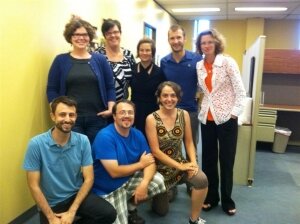
 nonprofit sector can create the strong, reliable, readily available matches every individual needs to kindle their civic leadership over a lifetime.
nonprofit sector can create the strong, reliable, readily available matches every individual needs to kindle their civic leadership over a lifetime.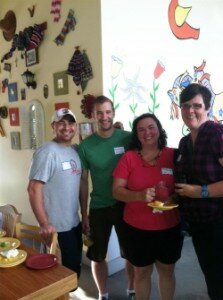 All of these higher education leaders were struggling to ensure high quality and depth in their offerings, while including the broadest possible spectrum of students. They were grappling with both the increasing costs of college and how to fully integrate national service resources into the community college or university experience. They raised the question of how we might include service as a way to reduce student debt.
All of these higher education leaders were struggling to ensure high quality and depth in their offerings, while including the broadest possible spectrum of students. They were grappling with both the increasing costs of college and how to fully integrate national service resources into the community college or university experience. They raised the question of how we might include service as a way to reduce student debt.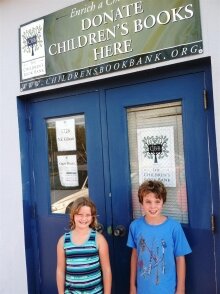
 kids. The spark ignited a movement of caring families and volunteers. Portland is full of civic vitality and sparks that have been nurtured into bold flames of leadership and citizen engagement. How can we help provide the civic networks and support systems that form the sturdy matches of ignition and light to propel Emily, Eric and Dani?
kids. The spark ignited a movement of caring families and volunteers. Portland is full of civic vitality and sparks that have been nurtured into bold flames of leadership and citizen engagement. How can we help provide the civic networks and support systems that form the sturdy matches of ignition and light to propel Emily, Eric and Dani? My son, Vinson, is a great enthusiast for earning badges and pins of any sort, so we became devotees of the Junior Ranger program as we traveled through the national parks this summer. To earn his badges, we identified sage brush, learned what Sitting Bull did during the Battle of the Little Big Horn (stayed with the women and children), and discovered how long it took to carve the figures on Mount Rushmore (14 years).
My son, Vinson, is a great enthusiast for earning badges and pins of any sort, so we became devotees of the Junior Ranger program as we traveled through the national parks this summer. To earn his badges, we identified sage brush, learned what Sitting Bull did during the Battle of the Little Big Horn (stayed with the women and children), and discovered how long it took to carve the figures on Mount Rushmore (14 years).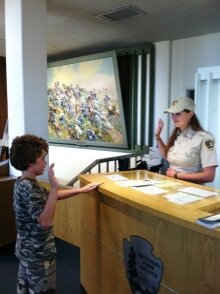
 The preservation of a special place like Crater Lake seems providential. But, it took three decades of advocacy and citizen leadership to make it happen. In 1870, when William Gladstone Steel was just a schoolboy, he unpacked his sandwich from its newspaper wrappings. As he ate, he read an article about an unusual lake in Oregon with startling blue water surrounded by cliffs almost 2,000 feet high. (So, perhaps it was providential). He first visited Crater Lake 15 years later and was so moved by its beauty, he began his tireless volunteer advocacy to have it preserved forever as a public park. Steele’s proposals to create a national park met with much argument from sheep herders and mining interests. He persisted and, in 1902, Crater Lake became a national park.
The preservation of a special place like Crater Lake seems providential. But, it took three decades of advocacy and citizen leadership to make it happen. In 1870, when William Gladstone Steel was just a schoolboy, he unpacked his sandwich from its newspaper wrappings. As he ate, he read an article about an unusual lake in Oregon with startling blue water surrounded by cliffs almost 2,000 feet high. (So, perhaps it was providential). He first visited Crater Lake 15 years later and was so moved by its beauty, he began his tireless volunteer advocacy to have it preserved forever as a public park. Steele’s proposals to create a national park met with much argument from sheep herders and mining interests. He persisted and, in 1902, Crater Lake became a national park.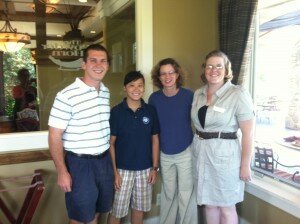 Imagine that you are driving down the road with your dog in the back, minding your own business when you find yourself being followed by a woman who parks when you park, then jumps out of her car, races to your side and starts talking about the difference you can make by contributing to the local animal shelter.
Imagine that you are driving down the road with your dog in the back, minding your own business when you find yourself being followed by a woman who parks when you park, then jumps out of her car, races to your side and starts talking about the difference you can make by contributing to the local animal shelter.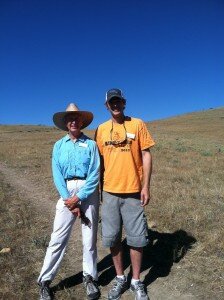 of the Bighorn Mountains. I visited my friends Michelle Sullivan and Brian Kuhl, who, along with other residents, have made a thoughtful choice to plant roots in Sheridan and raise their families. I guess you don’t end up here by accident.
of the Bighorn Mountains. I visited my friends Michelle Sullivan and Brian Kuhl, who, along with other residents, have made a thoughtful choice to plant roots in Sheridan and raise their families. I guess you don’t end up here by accident. I was fully attired on a recent Saturday morning, when I joined 150 volunteers in my first-ever Human Cattle Drive (alternatively called the Trail Trudge, Tromp or Trollop) to help break in a gorgeous new 12-mile trail created by the Sheridan Land Trust with help from cooperative private land owners. Families and neighbors alternatively tromped and visited with friends as they tamped down the path that the community will enjoy for decades to come.
I was fully attired on a recent Saturday morning, when I joined 150 volunteers in my first-ever Human Cattle Drive (alternatively called the Trail Trudge, Tromp or Trollop) to help break in a gorgeous new 12-mile trail created by the Sheridan Land Trust with help from cooperative private land owners. Families and neighbors alternatively tromped and visited with friends as they tamped down the path that the community will enjoy for decades to come.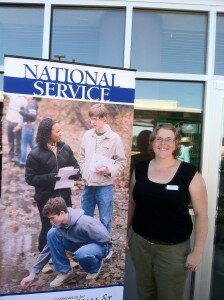 ity for elders that’s breaking the mold. The Green House Living movement, a care model for elders that throws out much of the institutional culture of nursing homes and embraces a home-like environment, inspired two local volunteers to get moving.
ity for elders that’s breaking the mold. The Green House Living movement, a care model for elders that throws out much of the institutional culture of nursing homes and embraces a home-like environment, inspired two local volunteers to get moving. no, but they had no way of saying yes – they had no additional capacity. And then a local plumber, who had seen a flier about the program (posted by Arin’s hairdresser), stepped forward. He organized a group of plumbers, welders and workmen, who took care of the entire cost. Within a year, The Food Group was sending nourishing meals home with 248 children each week.
no, but they had no way of saying yes – they had no additional capacity. And then a local plumber, who had seen a flier about the program (posted by Arin’s hairdresser), stepped forward. He organized a group of plumbers, welders and workmen, who took care of the entire cost. Within a year, The Food Group was sending nourishing meals home with 248 children each week.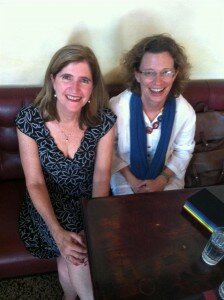 Minneapolis has long been considered a bastion of civic virtue, and for good reason. With the highest volunteer rate among large cities, the city understands the impact of giving back.
Minneapolis has long been considered a bastion of civic virtue, and for good reason. With the highest volunteer rate among large cities, the city understands the impact of giving back.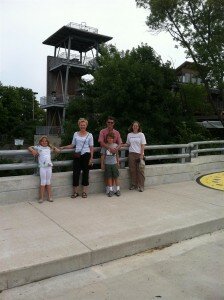 I must confess that my concept of Milwaukee was a bit trapped in old stereotypes. I was expecting a cold Midwestern city with musty factories and dusty breweries. That’s not what I got.
I must confess that my concept of Milwaukee was a bit trapped in old stereotypes. I was expecting a cold Midwestern city with musty factories and dusty breweries. That’s not what I got.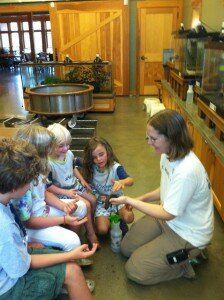 hired their first executive director, one of their fellow volunteers, Ken Leinbach.
hired their first executive director, one of their fellow volunteers, Ken Leinbach. You can’t help but marvel at Chicago in the summertime. On an evening stroll from the Museum Campus down the lakefront and up through Grant Park to the new Millennium Park, you see extraordinary cultural institutions, beautiful parks, a lively street life and wonderful restaurants.
You can’t help but marvel at Chicago in the summertime. On an evening stroll from the Museum Campus down the lakefront and up through Grant Park to the new Millennium Park, you see extraordinary cultural institutions, beautiful parks, a lively street life and wonderful restaurants.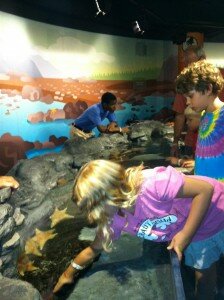 involves engaging volunteers from businesses and training them as project managers and leaders. In this way, volunteer engagement becomes not only a problem-solving project for the city, but also a team-building project for businesses and an important leadership development opportunity for employees. That’s a triple-win, to be sure.
involves engaging volunteers from businesses and training them as project managers and leaders. In this way, volunteer engagement becomes not only a problem-solving project for the city, but also a team-building project for businesses and an important leadership development opportunity for employees. That’s a triple-win, to be sure.
 ation’s inception, Battle Creek – founding home of the
ation’s inception, Battle Creek – founding home of the 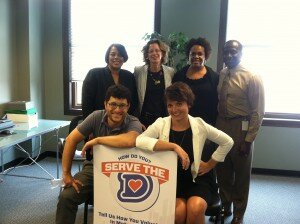 The Lafayette Coney Island Hot Dog Stand in downtown Detroit hasn’t changed much since it was founded in 1929. Menus aren’t really necessary – you can get hot dogs, chili, “loose” hamburgers and pie, and the servers take your order and yell to the kitchen how many “coneys” have been ordered.
The Lafayette Coney Island Hot Dog Stand in downtown Detroit hasn’t changed much since it was founded in 1929. Menus aren’t really necessary – you can get hot dogs, chili, “loose” hamburgers and pie, and the servers take your order and yell to the kitchen how many “coneys” have been ordered.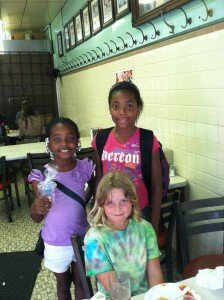 if I am in the zone, I can sell 60.”
if I am in the zone, I can sell 60.”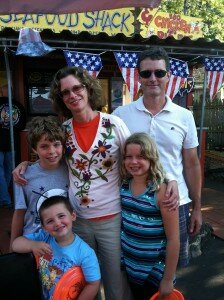 Buffalo was a terrific place to begin our journey across the country to visit with volunteers and citizen innovators. I met with community activists, AmeriCorps members and Alums who are driving civic change in Buffalo with their energy and idealism.
Buffalo was a terrific place to begin our journey across the country to visit with volunteers and citizen innovators. I met with community activists, AmeriCorps members and Alums who are driving civic change in Buffalo with their energy and idealism. percentage of the jobs retrofitting houses employ community members. Buffalo has one of the nation’s highest rates of home vacancies. A renaissance in Buffalo depends upon citizens banding together to create new approaches to economic development and healthier forms of community. This initiative is a really interesting model of authentic community organizing combined with new green approaches to economic development. It will be fascinating to see how PUSH develops in both its Green Development Zone and in its broader advocacy efforts to influence legislation and systems.
percentage of the jobs retrofitting houses employ community members. Buffalo has one of the nation’s highest rates of home vacancies. A renaissance in Buffalo depends upon citizens banding together to create new approaches to economic development and healthier forms of community. This initiative is a really interesting model of authentic community organizing combined with new green approaches to economic development. It will be fascinating to see how PUSH develops in both its Green Development Zone and in its broader advocacy efforts to influence legislation and systems.